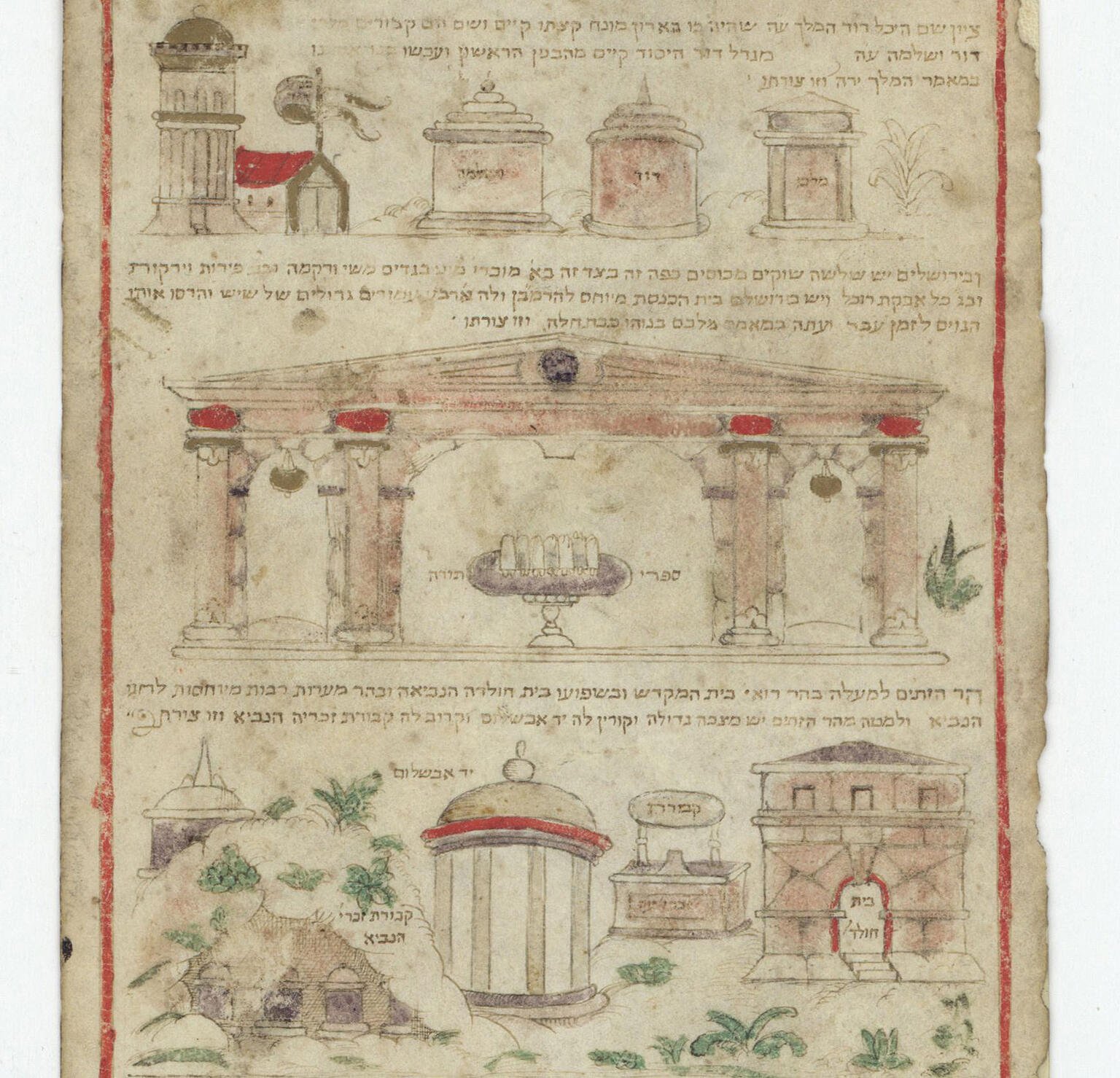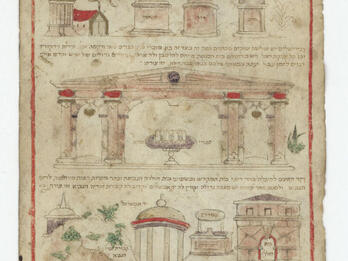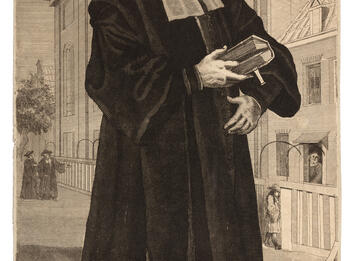Letter from Jerusalem
How goodly are the tents of Jacob, the dwelling-places of Israel (Numbers 24:5), the synagogues and study houses in Jerusalem, that from morning to evening and from midnight to morning are never silent, and whose mouths never cease from Torah study! And there are only two synagogues there, one of which, the Ashkenazic, a small one, is attended by all the Ashkenazim and the sage, our teacher, R. Isaiah [Horowitz, the Shelah]—may the All-Merciful guard and redeem him—their spiritual leader. They have worthy customs, among which is that they pass the entire day preceding the New Moon in fasting and prayer, as on Yom Kippur. And the second synagogue, a large one, is Sephardic, adjacent to which is the large study house where attendees enter and go from strength to strength [see Psalms 84:8]. People pray constantly in both of them, and it also serves as the place of meeting and assembly. Now, the two overseers of the community are Sephardim, and the Ashkenazim are dragged along in their wake. They are the sage, the Gaon, brother of the Gaon from Venice, and the physician Ibn Amram, pillars of the diaspora. They enjoy a good reputation—they stand in the breach [see Psalms 106:23] and no one challenges their actions. They have stipulated that out of all communal expenses, whether fixed in advance or not, the Ashkenazim are to pay a quarter, and the rest are to be defrayed by the holy Sephardic community. In total, they number almost two thousand souls—may the Almighty guard them and deliver them from all trouble!
The customs of the Sephardic synagogue are based upon the Talmud. First, each evening, after midnight, they rise during the third watch and recite prayers for divine forgiveness, and a sage teaches until dawn, when they recite the psalms in accordance with their custom, as found in Sephardic prayer books, so that they can time their recitation of the Shema‘ and the Amidah [at sunrise] in the manner of the scrupulously pious. And they recite the priestly blessing every day, with priests pronouncing the blessing, and after the daily Amidah they silently recite the Confession that is found in our prayer books, and immediately thereafter, the prayer “God, King”—and on concluding the thirteen divine attributes, they fall upon their faces in supplication, except on Mondays and Thursdays when they extend this prayer and say: And the Lord passed (Exodus 34:6–7) and three Confessions, the first two of which they recite aloud, and the third silently. They then take out a Torah scroll that is inside a small chest, which can be opened and closed, and which is lifted up together with the removal of the Torah scroll. Accordingly, they have no wrap around the scroll—only a small curtain that they place over the written text between the calling up of one man and another [to the Torah reading], which they position vertically above the words while they read [from the Torah] on the stand. And after the service on Thursdays, they sit on the ground and mourn with supplicatory prayers over the destruction of Jerusalem. Even though the community has left the synagogue to attend to their own affairs, permanent watches of men, divided into distinct groups, remain there all day long, continuously studying the Bible, the Mishnah, and the Gemara, until the earliest time for the afternoon service arrives, when they recite that prayer, and thereafter continue their studies until the time for the evening service. [ . . . ]
Let it be known to the master that a small Karaite synagogue still exists in Jerusalem, just as for the Jews, but they do not mix with them. Most of them are goldsmiths. They cling to their ancestral customs, as they hang the prayer shawl up in the synagogue and observe only the Written Law, to which they adhere most scrupulously. They total about twenty souls. May they not enter into the community of Israel, and may the Almighty enlighten their hearts to the truth! [ . . . ]
[Composed] in the city of Jerusalem, 14 Adar 5388 [March 19, 1628].
Credits
Published in: The Posen Library of Jewish Culture and Civilization, vol. 5.






